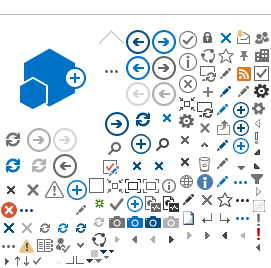Geospatial analysis involves the gathering, display, and manipulation of geo-referenced data, satellite position systems, satellite imagery and new data types (real-time or historical), making use of explicit geographic coordinates or identifiers used in geographic models. It can bolster data-driven decision-making in the roll-out of ICT networks to provide connectivity to underserved and unconnected communities.
National governments and local authorities need information about a country, the environment, assets, people, and its physical and social infrastructure to encourage economic development, entrepreneurial activity, transparency, or national security.
Different countries have adopted public National ICT Mapping Systems, according to their national needs to assess national connectivity. For example, broadband maps can inform investors, companies, and citizens about the status of networks, quality of service, 5G or Fibre-To-The-Home (FTTH) service availability, network resilience, among others.
Fifth-generation mobile technology (5G) needs accurate geospatial data and denser telecom networks, with significantly higher numbers of base stations than traditional mobile networks. Accurate geographical data and advanced spatial analytics can help ensure that these radio networks are cost-effective and efficient and improve smart transportation and intelligent traffic management systems. ITU has conducted a survey of the public National ICT Mapping Systems, available at
https://bbmaps.itu.int/portal.
Recently, geospatial analysis has advanced considerably in terms of its:
- Scope, precision, accuracy and granularity.
- Easier and faster transmission, analysis and manipulation (e.g. the connectivity of mega-constellations of satellites);
- The number and type of devices equipped with geospatial and location identification (which can include satellite, mobile, fibre, IoT devices, sensor networks, as well as connected cars and vehicles).
These developments mean that geospatial data and information are now used for many different use cases, from the global level to the local level, including for monitoring, verifying and/or confirming:
- Identification of access to digital network gaps, availability of existing infrastructure and geospatial models, and business planning to improve connectivity of underserved or under-connected communities.
- Climate modelling and weather prediction; monitoring local weather, seasonal or climatic systems (e.g. the El Niño effect);
- Urban use cases, including intelligent transport systems, autonomous vehicles, gas emissions, and monitoring traffic congestion in real-time.
- Natural disasters (e.g. extent of landslides or flooding) and coordination of relief efforts.
- Identifying and mapping facilities, e.g. schools, clinics, refugee camps.
- Monitoring abuse of human rights (e.g. treatment of refugee populations).
- Identifying archaeological sites of interest.
- Mapping land use and deforestation and/or estimating crop yields.
- Estimating poverty and income levels (e.g. from the quality of roof materials);
- The migration of animal populations.
